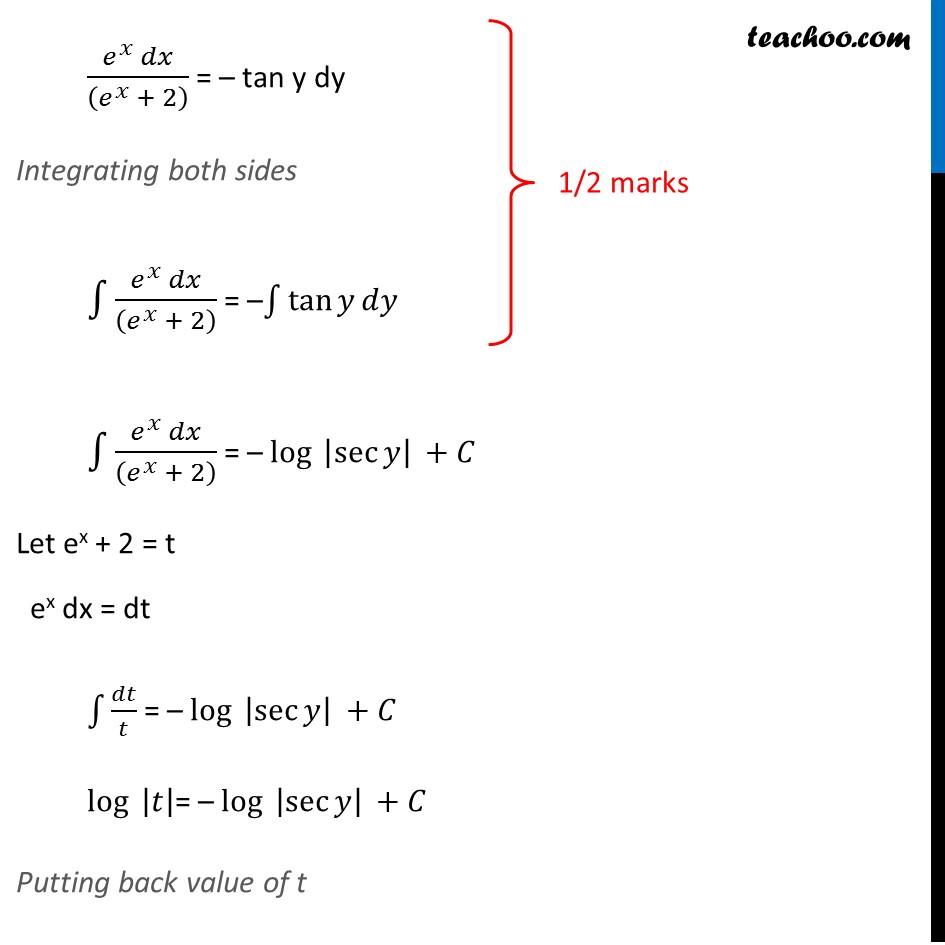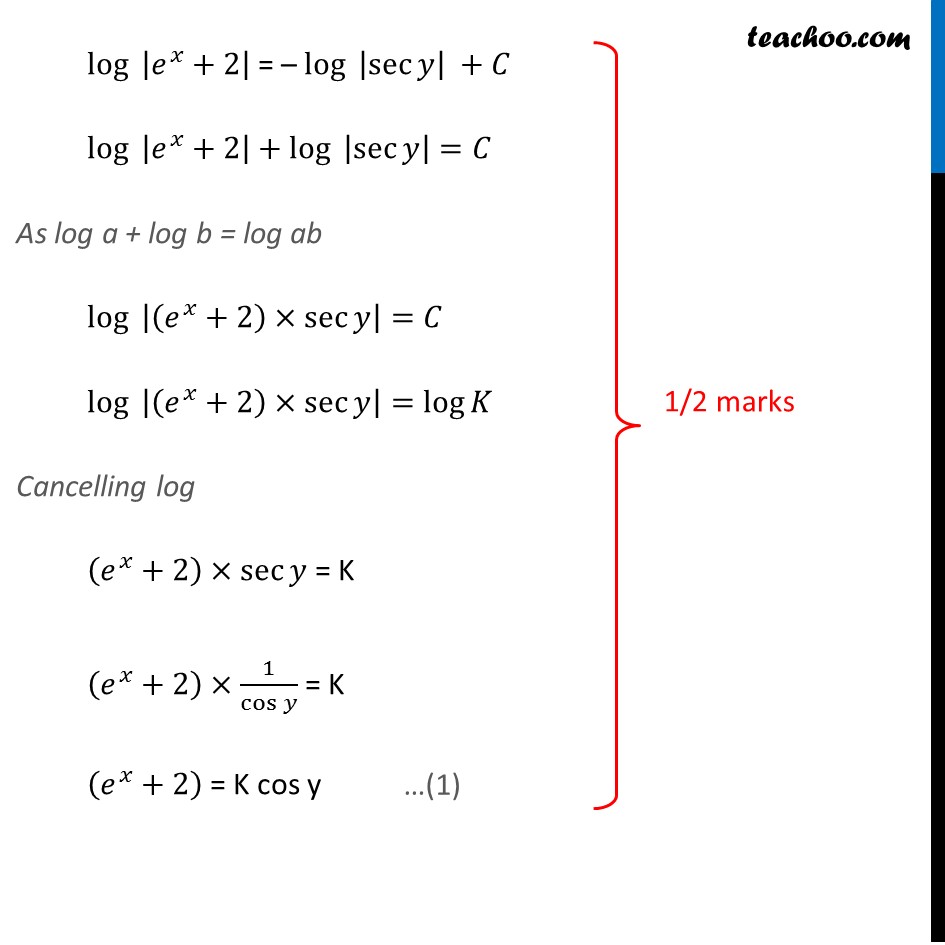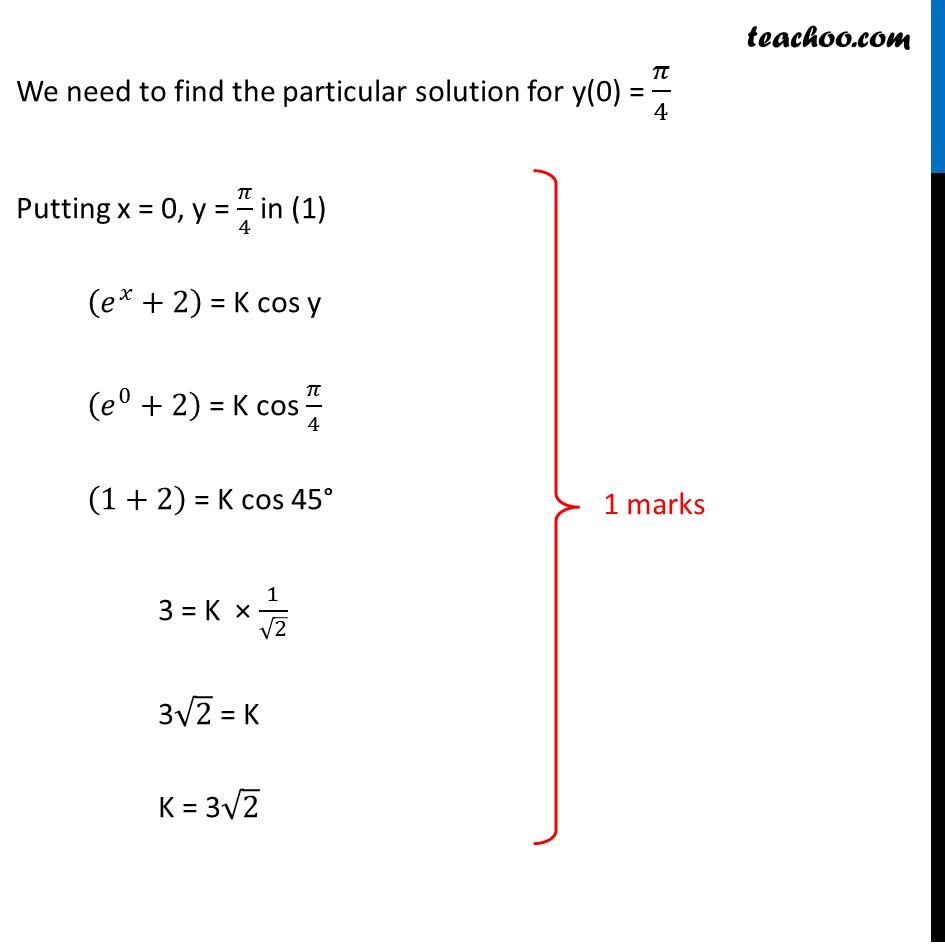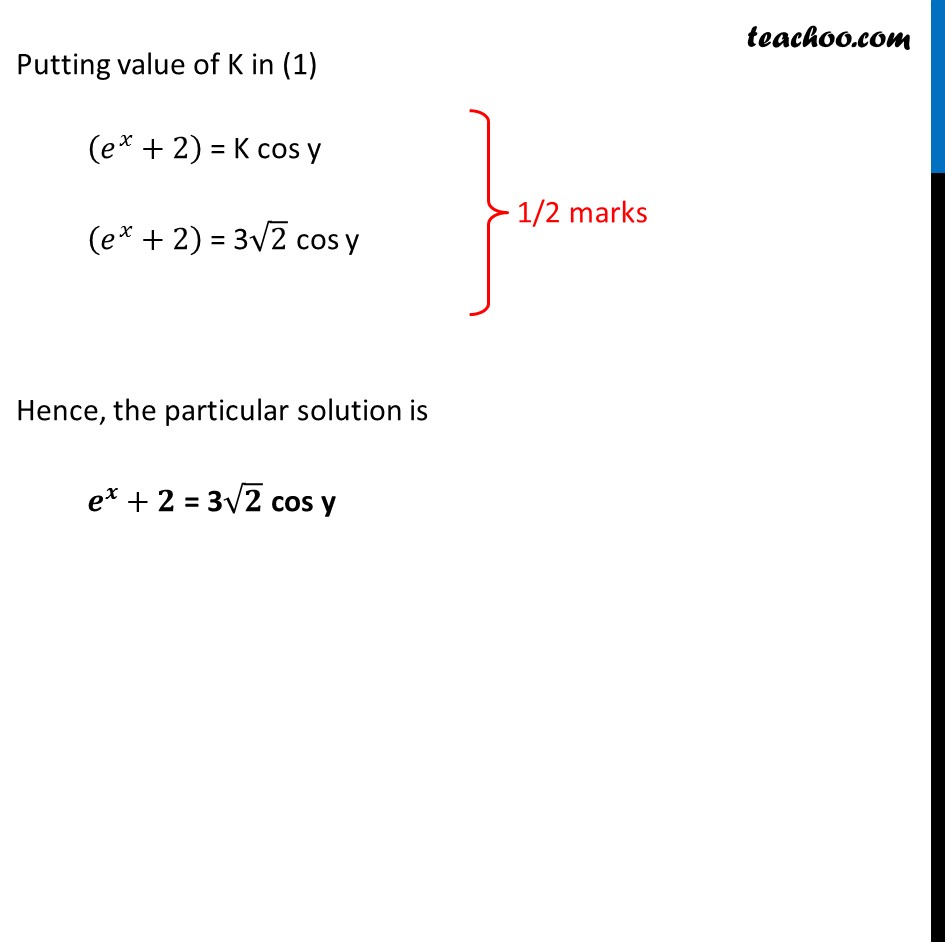Question 21 (OR 1 st question)
Find the particular solution of the following differential equation.
cos y dx + (1 + 2e -x ) sin y dy = 0; y(0) = π/4





CBSE Class 12 Sample Paper for 2019 Boards
CBSE Class 12 Sample Paper for 2019 Boards
Last updated at Dec. 16, 2024 by Teachoo
Question 21 (OR 1 st question)
Find the particular solution of the following differential equation.
cos y dx + (1 + 2e -x ) sin y dy = 0; y(0) = π/4





Transcript
Question 21 (OR 1st question) Find the particular solution of the following differential equation. cos y dx + (1 + 2𝑒^(−𝑥)) sin y dy = 0; y(0) = 𝜋/4 cos y dx + (1 + 2𝑒^(−𝑥)) sin y dy = 0 cos y dx = – (1 + 2𝑒^(−𝑥)) sin y dy 𝑑𝑥/((1 + 〖2𝑒〗^(−𝑥))) = – sin𝑦/cos𝑦 dy 𝑑𝑥/((1 + 〖2𝑒〗^(−𝑥))) = – tan y dy 𝑑𝑥/((1 + 2/𝑒^𝑥 ) ) = – tan y dy 𝑑𝑥/(((𝑒^𝑥 + 2)/𝑒^𝑥 ) ) = – tan y dy (𝑒^𝑥 𝑑𝑥)/((𝑒^𝑥 + 2) ) = – tan y dy Integrating both sides ∫1▒(𝑒^𝑥 𝑑𝑥)/((𝑒^𝑥 + 2) ) = –∫1▒〖tan𝑦 𝑑𝑦〗 ∫1▒(𝑒^𝑥 𝑑𝑥)/((𝑒^𝑥 + 2) ) = – log〖 |sec𝑦 |〗 +𝐶 Let ex + 2 = t ex dx = dt ∫1▒𝑑𝑡/𝑡 = – log〖 |sec𝑦 |〗 +𝐶 log〖 |𝑡|〗= – log〖 |sec𝑦 |〗 +𝐶 Putting back value of t log〖 |𝑒^𝑥+2|〗 = – log〖 |sec𝑦 |〗 +𝐶 log〖 |𝑒^𝑥+2|〗+ log〖 |sec𝑦 |〗=𝐶 As log a + log b = log ab log〖 |(𝑒^𝑥+2)×sec𝑦 |〗=𝐶 log〖 |(𝑒^𝑥+2)×sec𝑦 |〗=log𝐾 Cancelling log (𝑒^𝑥+2)×sec𝑦 = K (𝑒^𝑥+2)×1/cos𝑦 = K (𝑒^𝑥+2) = K cos y log〖 |𝑒^𝑥+2|〗 = – log〖 |sec𝑦 |〗 +𝐶 log〖 |𝑒^𝑥+2|〗+ log〖 |sec𝑦 |〗=𝐶 As log a + log b = log ab log〖 |(𝑒^𝑥+2)×sec𝑦 |〗=𝐶 log〖 |(𝑒^𝑥+2)×sec𝑦 |〗=log𝐾 Cancelling log (𝑒^𝑥+2)×sec𝑦 = K (𝑒^𝑥+2)×1/cos𝑦 = K (𝑒^𝑥+2) = K cos y We need to find the particular solution for y(0) = 𝜋/4 Putting x = 0, y = 𝜋/4 in (1) (𝑒^𝑥+2) = K cos y (𝑒^0+2) = K cos 𝜋/4 (1+2) = K cos 45° 3 = K × 1/√2 3√2 = K K = 3√2 Putting value of K in (1) (𝑒^𝑥+2) = K cos y (𝑒^𝑥+2) = 3√2 cos y Hence, the particular solution is 𝒆^𝒙+𝟐 = 3√𝟐 cos y